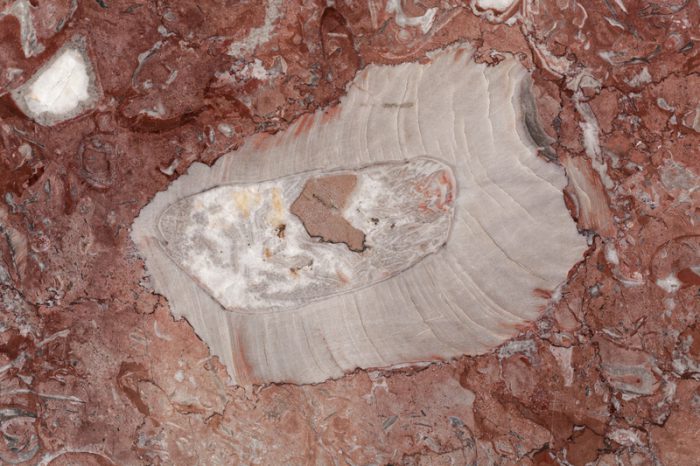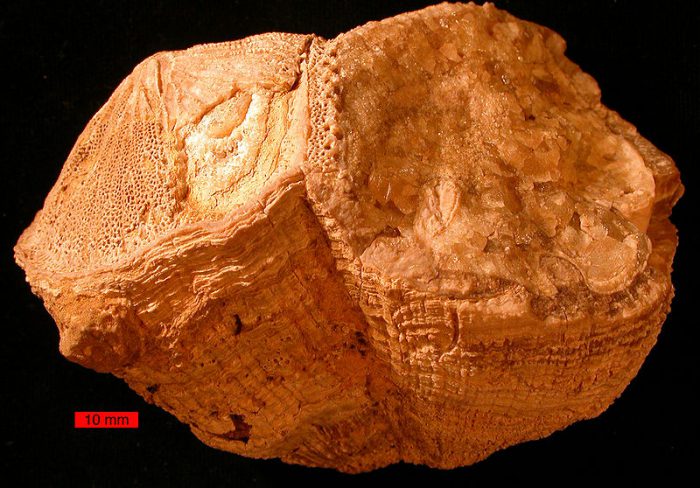Fossils can tell us a lot of things about animals that existed millions of years ago. How they moved, what they ate, or how they cared for their young.
Fossils can also tell paleontologists things about the environment these animals lived in. How warm it was, what the seasons were like. Even how long a day was...
The length of a day in the late Cretaceous Period was a half an hour shorter than it is today. Yep, you read that right. Dinosaur days were about 23.5 hours long!
So how did an old piece of rock help scientists figure this out?
You know me, working 23.5/7!
The fossil in question was a 70 million-year-old shell of a prehistoric bivalve called Torreites sanchezi. This animal was a rudist, which was something like an ancient species of clam.
They went extinct along with the rest of the dinosaurs at the end of the Creataceous. But when they lived, their shells were something like living clocks. They grew one new layer every single day! (Incidentally, modern clams do this as well — pretty cool, right?)
And the layers of this particular fossil are jam-packed with information.
Layer by layer

An example of a rudist fossil. (© Christian Weiß - Dreamstime.com)
On a bivalve, each layer reveals things about the day that it was formed, such as the temperature of the water it was in. In the case of our little T. sanchezi, it lived in an ocean that was very hot by modern standards. Summer waters were about 40°C (104°F), with winter waters around 30°C (86°F). On the fossil, winter layers are darker in colour than the summer ones.
So how did this tell us the length of a day? Get ready for some math!
Scientists counted the layers (yes, all of them!) and discovered that when you put all of the summer and winter layers together for a year, you got 372 layers. That means that each year had 372 days, not 365.
Before we break down exactly how this made dinosaur days 23.5 hours long, we need to look at one more set of facts.
What makes a year? Or a day?
The Moon used to be much closer than it is today. It is getting further by 3.82 centimetres (1.5 inches) a year. (Getty Embed)
One Earth year is determined by one thing: How long it takes the Earth to orbit the Sun. For millions, even billions of years, this has remained pretty much the same. It takes about 8,760 hours to complete one orbit.
So that's a year.
But a day is determined by how long it takes the Earth to rotate on its axis once. This is the motion that gives us a sunrise and a sunset. And for billions of years, our days have been getting steadily longer. This is because the Moon has been slowly moving further away from Earth. The closer the Moon, the more its gravity speeds up Earth's rotation.
Scientists believe that around 1.4 billion years ago — when the Moon was much closer — an Earth day was just 18 hours long!
And the equation is...
So what does all of this mean?
Basically, the number of days in a year is the number of times the Earth completes a full rotation during one orbit of the Sun. In modern times, that is 365 times.
So 8,760 hours (the length of a year) divided 365 equals 24. Each of our days is 24 hours long.
Now let's look at the time period of the T. sanchezi. They had 372 days in their year.
8,760 divided by 372 equals... 23.55. Or about 23 and a half hours long.
Wow, pretty fascinating, right? It just goes to show you that fossils leave us clues to all sorts of things. Can you dig it? We knew you could!
 A fossil like this one is showing scientists amazing keys to the past. (Wikimedia Commons)
A fossil like this one is showing scientists amazing keys to the past. (Wikimedia Commons)










What!!!!!!!!!!
My brain is now going to implode.